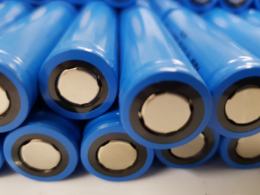As the world’s demand for plastic products remains unabated through the years since its widespread use, experts have continuously been looking into ways of repurposing what would have become unwanted occupants of coastlines and oceans. Now, as part of science’s modern push towards sustainability, scientists have now managed to turn waste plastics into tiny pieces of carbon capture technology, all thanks to “nanopores” formed with quite a bit of heat.
Designed by researchers from Rice University and whose results were published in the journal ACS Nano, the process involves pyrolyzing waste plastics ground into a powder that had been mixed with potassium acetate (CH3CO2K). Heating the waste plastic powder in the presence of the acetate material gives the resulting sorbent particles “nanopores” no more than 0.7 nm wide.
What’s surprising about the resulting product, aside from the unique acetate addition of the process, is the fact that the sorbent was capable of storing about 18% of their own weight in carbon dioxide (CO2) from the air. Heating the resultant porous sorbent at about 75 °C (167 °F) released the captured CO2, reopening about 90% of the pores in each particle in the process and enabling them for reuse.
“Point sources of CO2 emissions like power plant exhaust stacks can be fitted with this waste-plastic-derived material to remove enormous amounts of CO2 that would normally fill the atmosphere,” said Rice chemist and lead author James Tour in an official statement. “It is a great way to have one problem, plastic waste, address another problem, CO2 emissions.”
Additionally, plastics like polypropylene (PPy) and high- and low-density polyethylene (HDPE, LDPE) are the most ideal plastics to be used for the resulting CO2 capture process—an interesting find, at the very least, given that these plastics are notorious for being difficult to recycle chemically.
Tour, together with co-lead authors Rice alumnus Wala Algozeeb, graduate student Paul Savas, and postdoctoral researcher Zhe Yuan, believe that their novel sorbent material would be capable of tasks like removing CO2 from natural gas streams while being cheaper by the ton compared to current industry standards.
References
- Algozeeb, W. A., Savas, P. E., Yuan, Z., Wang, Z., Kittrell, C., Hall, J. N., Chen, W., Bollini, P., & Tour, J. M. (2022). Plastic waste product captures carbon dioxide in nanometer pores. ACS Nano. https://doi.org/10.1021/acsnano.2c00955
- Coxworth, B. (2022, April 5). New technique uses plastic waste to capture CO2 emissions. New Atlas. https://newatlas.com/environment/plastic-waste-sorbent-capture-carbon-dioxide/
- Williams, M. (2022, April 5). Treated plastic waste good at grabbing carbon dioxide [Rice University]. Rice News. https://news.rice.edu/news/2022/treated-plastic-waste-good-grabbing-carbon-dioxide











